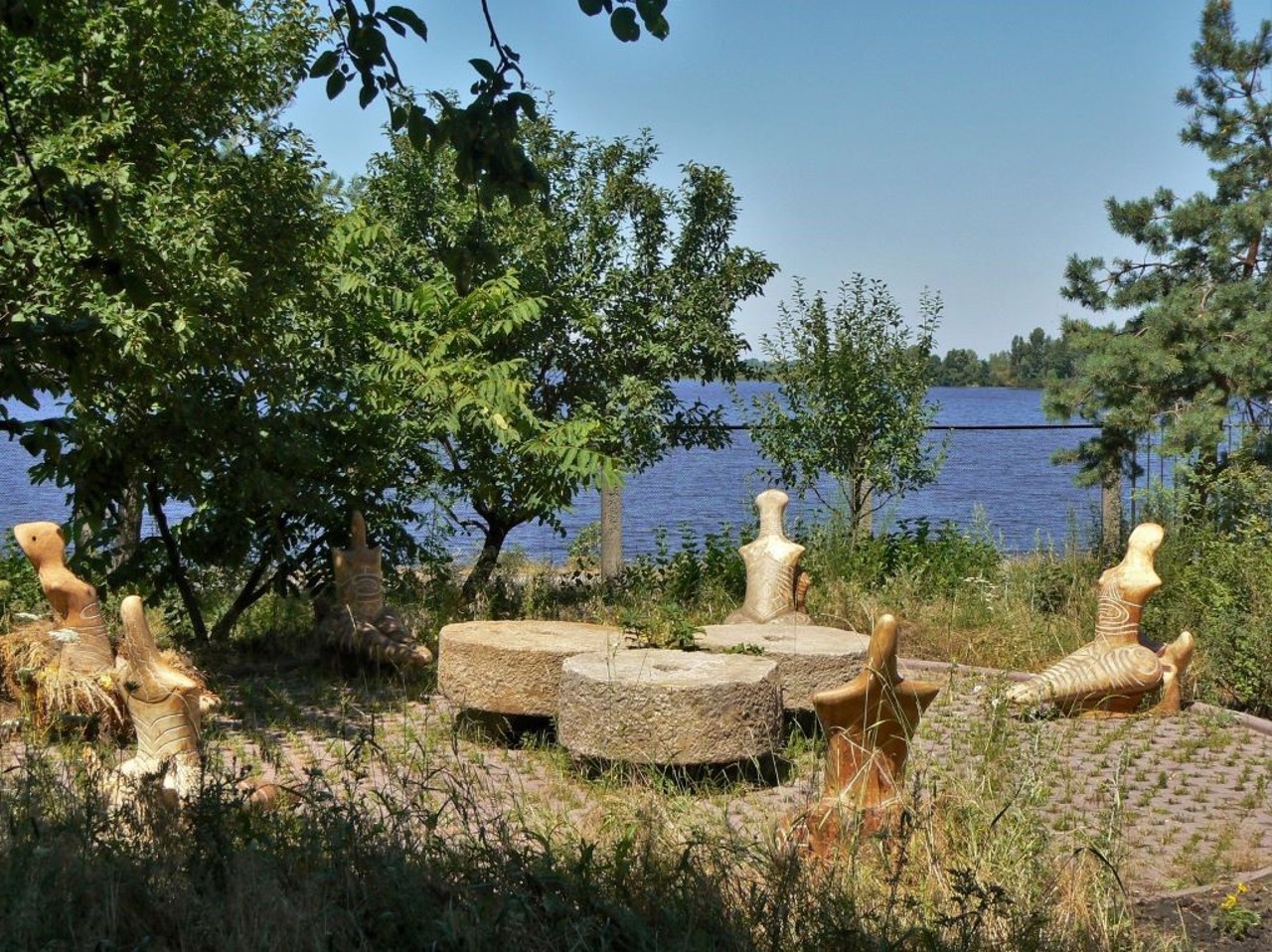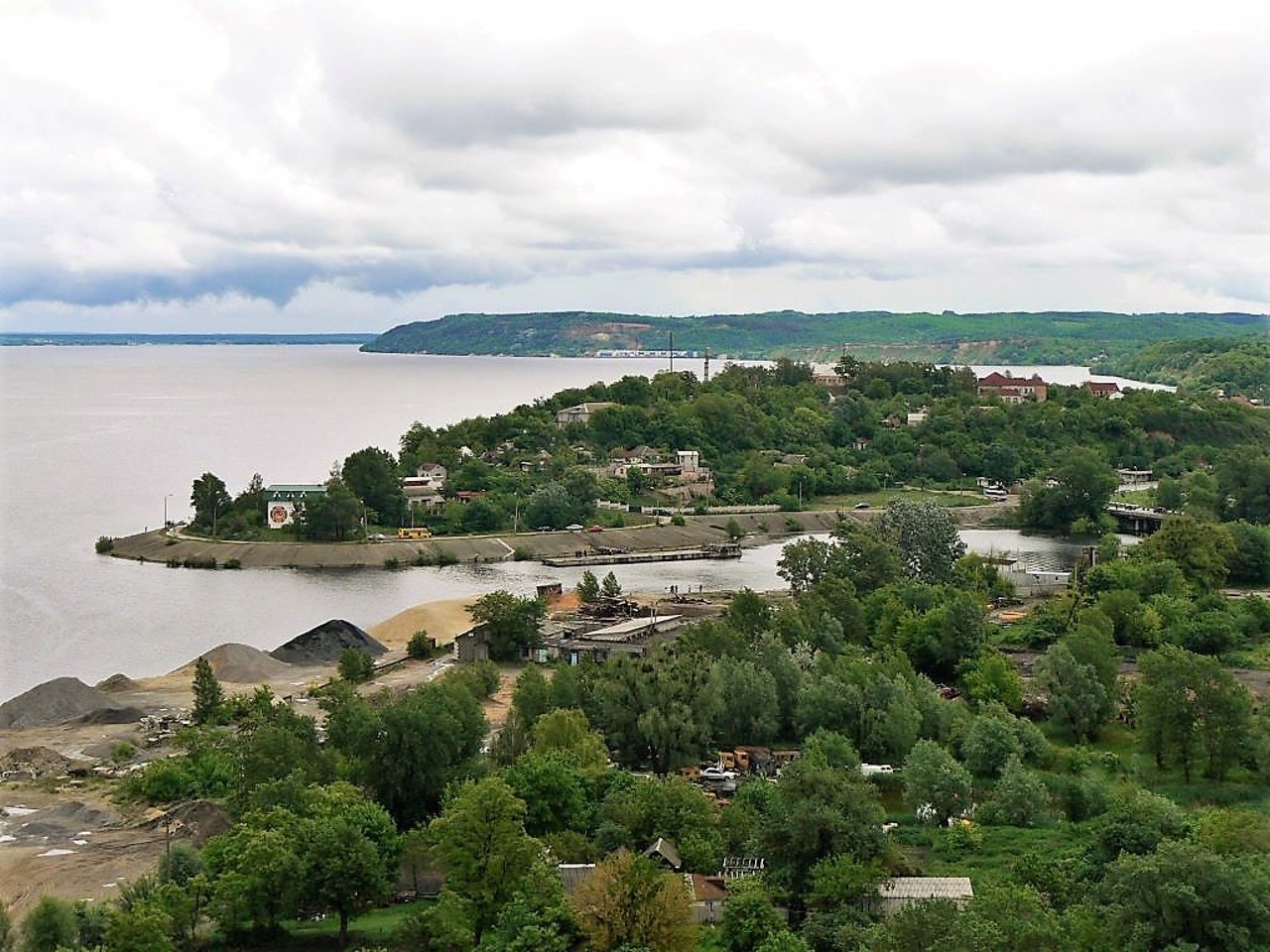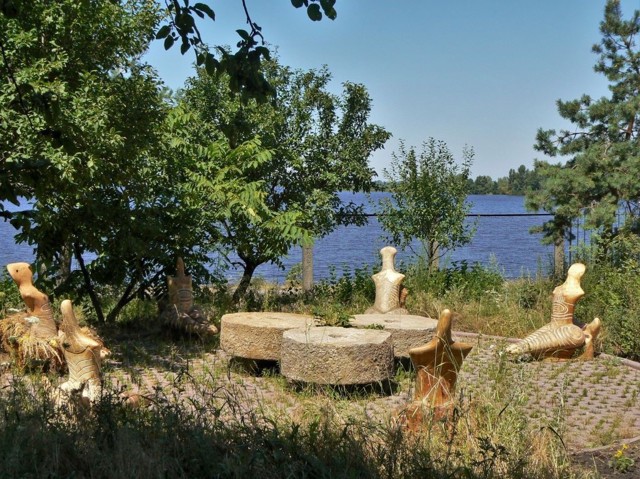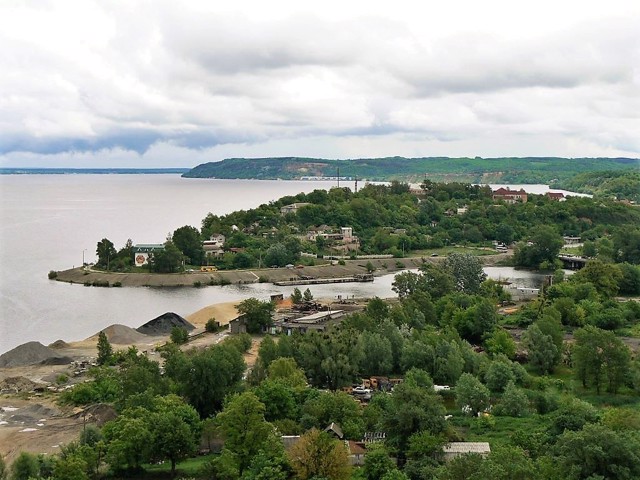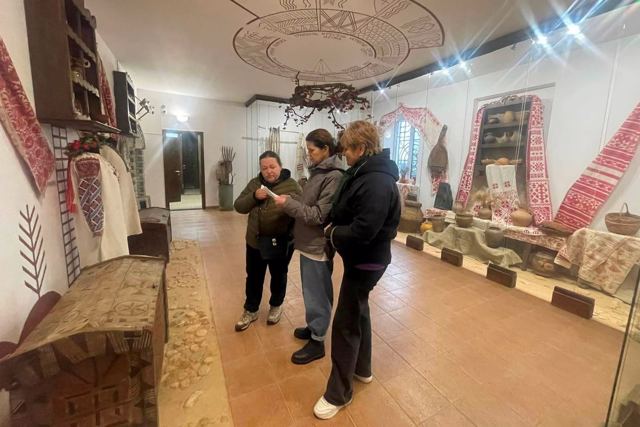Functional temporarily unavailable
General information about Trypillia
The picturesque village of Trypillia lies on the hills above the Dnipro near Ukrainka near Kyiv.
A temple and a burial ground of the Zarubinets culture have been preserved on Divych Hill.
The Ancient Rus city of Trepol has been known since 1032. The name is associated with the landscape of the area - three fertile fields are formed by the rivers Stuhna, Krasna and Bobritsa. In princely times, here, at the confluence of the Stuhna and the Dnipro, there was a ferry and anchorage for merchant ships. Trepol has repeatedly become a gathering point for Rus princes before the campaign against the Polovtsians. After the Mongol-Tatar invasion, the city fell into decay and still remains a small village.
It was here in 1896 that archaeologist Vikentiy Khvoyka first discovered tra ...
The picturesque village of Trypillia lies on the hills above the Dnipro near Ukrainka near Kyiv.
A temple and a burial ground of the Zarubinets culture have been preserved on Divych Hill.
The Ancient Rus city of Trepol has been known since 1032. The name is associated with the landscape of the area - three fertile fields are formed by the rivers Stuhna, Krasna and Bobritsa. In princely times, here, at the confluence of the Stuhna and the Dnipro, there was a ferry and anchorage for merchant ships. Trepol has repeatedly become a gathering point for Rus princes before the campaign against the Polovtsians. After the Mongol-Tatar invasion, the city fell into decay and still remains a small village.
It was here in 1896 that archaeologist Vikentiy Khvoyka first discovered traces of a new archaeological culture of the Eneolithic era (Bronze Age, V-III millennium BC), calling it Trypillian after the settlement. Trypillians lived in gigantic protogods, were engaged in agriculture and cattle breeding, made high-quality ceramics and fabrics. The culture is poorly studied, many aspects cause heated discussions in the scientific world. Alternative scientific versions can be heard in two Trypillian museums - the state archaeological museum and the private museum "Aratta".
There is an opportunity to relax in a small restaurant and hotel complex on the shore of the bay.
Мальовниче село Трипілля лежить на пагорбах над Дніпром поруч з Українкою неподалік від Києва.
На Дівич-горі збереглося капище та могильник зарубинецької культури.
Давньоруське місто Треполь відоме з 1032 року. Назву пов'язують з ландшафтом місцевості - три родючих поля утворені річками Стугна, Червона та Бобриця. За княжої доби тут, при впадінні Стугни в Дніпро, була переправа та стоянка торгових суден. Треполь неодноразово ставав пунктом збору руських князів перед походом на половців. Після монголо-татарської навали місто прийшов в занепад, до сих пір залишається невеликим селом.
Саме тут у 1896 році археолог Вікентій Хвойка вперше виявив сліди нової археологічної культури епохи енеоліту (бронзового століття, V-III тисячоліття до нашої ери), назвавши її трипільсь ...
Мальовниче село Трипілля лежить на пагорбах над Дніпром поруч з Українкою неподалік від Києва.
На Дівич-горі збереглося капище та могильник зарубинецької культури.
Давньоруське місто Треполь відоме з 1032 року. Назву пов'язують з ландшафтом місцевості - три родючих поля утворені річками Стугна, Червона та Бобриця. За княжої доби тут, при впадінні Стугни в Дніпро, була переправа та стоянка торгових суден. Треполь неодноразово ставав пунктом збору руських князів перед походом на половців. Після монголо-татарської навали місто прийшов в занепад, до сих пір залишається невеликим селом.
Саме тут у 1896 році археолог Вікентій Хвойка вперше виявив сліди нової археологічної культури епохи енеоліту (бронзового століття, V-III тисячоліття до нашої ери), назвавши її трипільською за назвою населеного пункту. Трипільці жили в гігантських протомістах, займалися землеробством і скотарством, виготовляли високоякісну кераміку та тканини. Культура маловивчена, багато аспектів викликають бурхливі дискусії в науковому світі. Альтернативні наукові версії можна почути в двох трипільських музеях - державному археологічному музеї та приватному музеї "Аратта".
Є можливість відпочити в невеликому ресторанно-готельному комплексі на березі затоки.
Сплануй своє перебування у Trypillia
What to see and where to go in Trypillia
Tourist attractions and museums of Trypillia
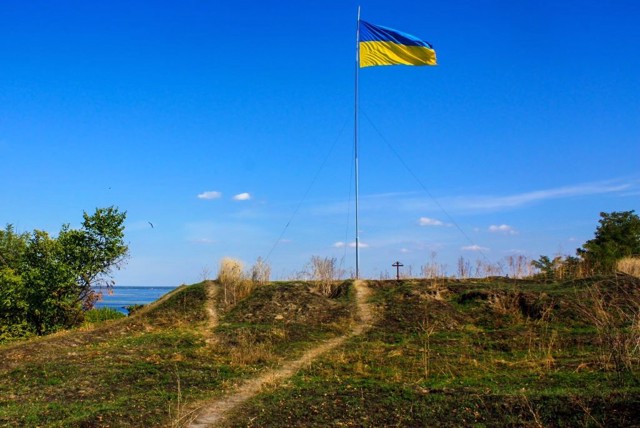
Divych-hora (Divych-Hill)
Historic area , Natural object , Archaeological site
Divych-hora (Devich-hora, Divocha hora, Divych-Hill) is a high hill above the Dnipro in the center of the village of Trypillia. The name is probably connected with the ancient Slavic cult of a female deity - the progenitor goddess, the goddess Virgo (Diva).
On the top of Divych-hora, a settlement and burial ground of the Zarubinetska culture (II century BC), as well as an ancient Slavic temple (VI century) were discovered. There is an assumption that there was a sanctuary of a pagan virgin goddess. The altar consisted of nine hemispherical recesses in which ritual food was cooked.
From the top of Divych-hora, a wonderful panorama of Trypillia, the Dnipro and the surrounding hills opens up.
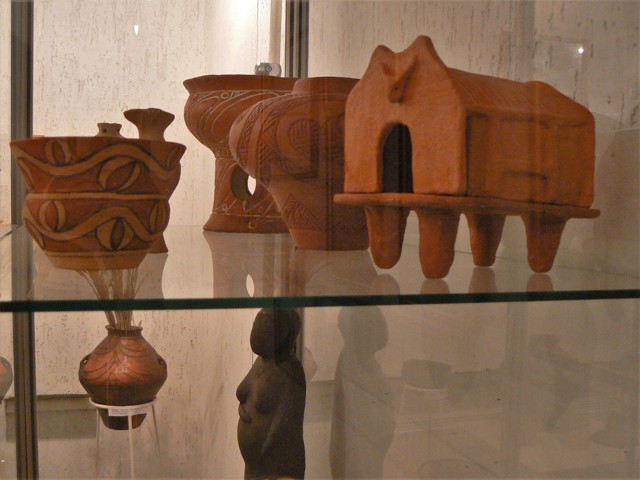
Kyiv Regional Archaeological Museum
Museum / gallery
The Kyiv Regional Archaeological Museum in Trypillia is mainly dedicated to the Trypillia archeological culture, which was named after this village in the Kyiv region, where the first archeological excavations were carried out.
The dark constructivist building of cubic shape is located on Posadova Hill, on the site of the ancient settlement of Trepol. According to architect Anatoliy Ihnashchenko, the chest building symbolizes the wealth of Ukraine, and located around the stone - a piece of land.
The Kyiv Regional Archaeological Museum was established to commemorate the 100th anniversary of the discovery of Trypillia culture by Vikentiy Khvoyka on the basis of the former Museum of Komsomol Glory. The exposition presents 34 thousand exhibits. The most interesting of them are exhibited in the Trypillya hall, which is stylized as a church of Trypillia: ceramics, jewelry, models of Trypillya residents, etc. In total, about 200 products of various shapes, sizes, applications and ornaments.
In two more halls there are exhibits of other epochs, starting from the Stone Age and ending with the XVIII century. Souvenirs imitating Trypillia ceramics are for sale. The most popular is the original binocular ritual utensils of Trypillya.
A bronze bust of Vikentiy Khvoyka, the first archeological monument in Ukraine, has been erected on a pedestal next to the museum building. In front of the monument there is a "Table of Harmony", in the center of which is a metal cylinder - the axis of the earth with the inscription "Dialogue of Cultures" in Ukrainian and English, symbolizing the intertwining of cultures on this land, the transition from one to another. Around the "Table of Harmony" placed historical exhibits of stone, created by ancient man. In front of the facade of the museum there are large blocks of sandstone, which are over 70 million years old - a gift from the National Historical and Ethnographic Reserve Pereyaslav.
The branches of the Kyiv Regional Archaeological Museum are the Archaeological and Local Lore Museum in the village of Kopachiv, the Historical and Local Lore Museum in the village of Sosnova, the Anatoliy Solovyanenko Museum in the village of Kozyn, the Military History Museum in the village of Trypillia, the Vikentiy Khvoyka Museum and the Ivan Franko Museum in the village of Halepya, the Cossack Era Museum and Picture Gallery in the village of Hermanivka.
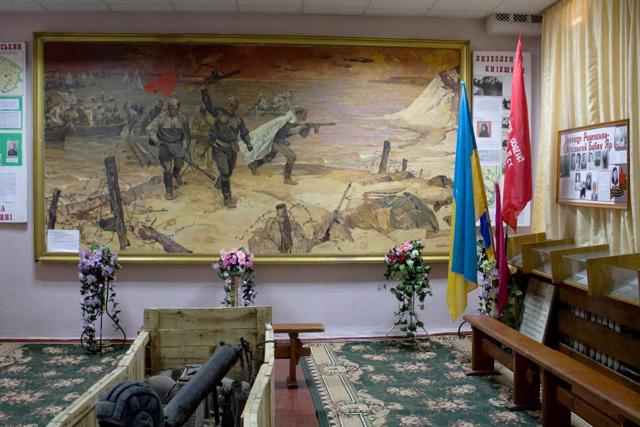
Military History Museum
Museum / gallery
The exemplary military-historical museum of the village of Trypillia was opened in 2001 in the premises of the Trypillia Lyceum as a museum of military glory.
The main exposition tells about the events that took place in the village and its surroundings during the Second World War, and about the villagers who defended their homeland from the invaders. In particular, materials are presented about the "Rozkopana" tract, which is popularly called "Obuhiv's Babyn Yar", where the Nazis shot more than 700 civilians on the night of July 1, 1943.
An improvised soldier's trench has been set up in the hall, which stores the remains of weapons that were found on the battlefields in the vicinity of the village.
Separate stands tell about the citizens of Trypillia who took part in the war in Afghanistan and in the liquidation of the consequences of the accident at the Chornobyl nuclear power plant.
The "Russian-Ukrainian War" section is constantly replenished with new exhibits. Here you can learn about the residents of the village who have been defending Ukraine at the front since 2014, as well as about the work of the volunteer staff of the Trypillia Lyceum and other local volunteer organizations.
The Trypillia Military History Museum is a branch of the Kyiv Regional Archaeological Museum.
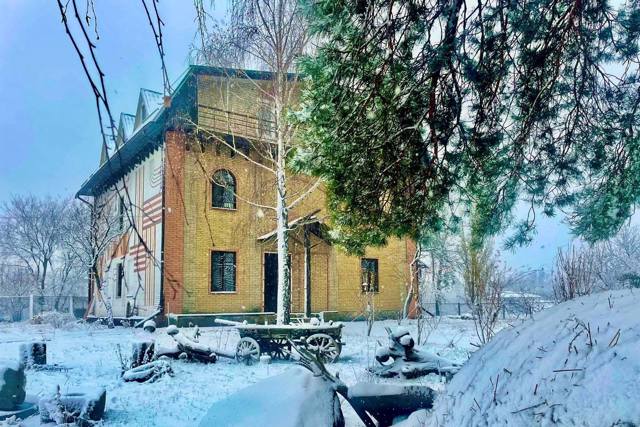
Trypillia Ethno-Historical Complex
Museum / gallery
The Trypillia Ethno-Historical Complex is located in a picturesque place above the Dnieper Bay in the village of Trypillia in the Kyiv region, opposite Divych Hill. This is a private museum and entertainment institution of a modern format, which in an interactive form introduces the history and culture of Ukraine from the earliest times.
Back in 2006, the famous collector Oleksandr Polishchuk together with the architect Volodymyr Lazorenko, the artist Anatoliy Haydamaka and the historian-fiction writer Yuriy Shylov opened the private historical and archaeological museum "Ancient Aratta-Ukraine" at this place. The basis of his exposition was Polishchuk's personal collection of household items of Trypillya culture.
After a long break, the museum reopened in 2023 in a new format. The exposition on three floors introduces the archaeological findings on the territory of Kyiv region and the intangible cultural heritage of the region.
On the first floor of the museum, you can visit the Ukrainian room and the handmade hall, where ancient looms, spindles, as well as a large collection of ancient embroidered shirts, towels, and carpets are presented. Fossils of the first living organisms and animals that were found on the territory of Ukraine are exhibited in the hall of the Ediacaran period. The exhibition of Cucuteni-Trypillya culture presents ceramics of the Trypillya type (mostly passportless and unattributed). The exhibition hall is currently exhibiting the Motanka dolls of the craftswoman Yuliya Petrenko.
The Residence-Museum of Saint Nicholas opens in a separate building in winter. There is a cafe with a fireplace in the Ukrainian style, where children's master classes, tea ceremonies, themed events are held, lunches are offered to the order of tourist groups. In addition to regular excursions, the museum conducts quests. The souvenir shop sells handmade products.
Trypillia in news and blogs
Reviews Trypillia
Geographical information about Trypillia
| {{itemKey}} | {{itemValue}} |
|---|---|
| Region |
Kyiv |
